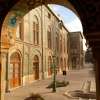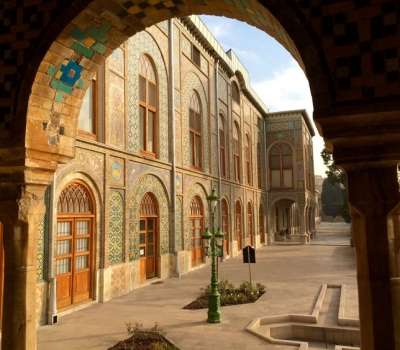
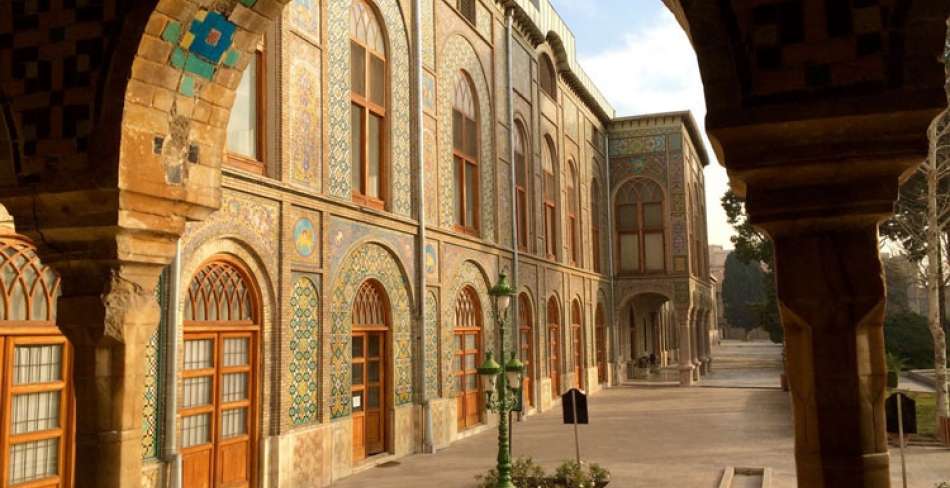
The UNESCO World Heritage Site is a place or perspective such as a forest, mountain, lake, island, desert, monument, building, complex, or city that is known by The United Nations Educational, Scientific and Cultural Organization (UNESCO) as a historic, scientific, natural and cultural area and have great importance to human interests.
Iran as a historic country with a great history as one of the first civilizations includes many historical places as well as the natural ones due to the especial geographical climates. Here, we refer to those registered in the UNESCO World Heritage sites.
Iran’s UNESCO World Heritage Site
Iran’s UNESCO World Heritage sites includes twenty-two cultural places and one natural place (23 sum-up). First, let’s get to know the cultural sites:
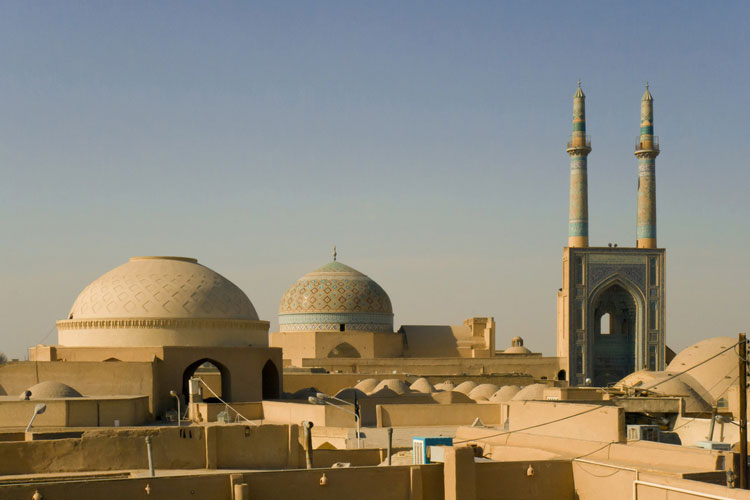
UNESCO Cultural World Heritage Sites in Iran (22 sites)
Persepolis, Shiraz
Persepolis is regarded as the ceremonial capital of the Achaemenid Empire. It is located in the northeast of Fars province. It was founded by Darius I and was used as a palace for different ceremonies. The historians believe that Alexander the Great attacked Persepolis and burnt it, so probably a large part of the Achaemenid books, art and culture had been destroyed. Nevertheless, archaeologists confirm the ruins are considered the signs of fire and invasion. UNESCO registered the ruins of Persepolis as a World Heritage Site in 1979.
To read more about the tourist attractions in Shiraz, click on the link.
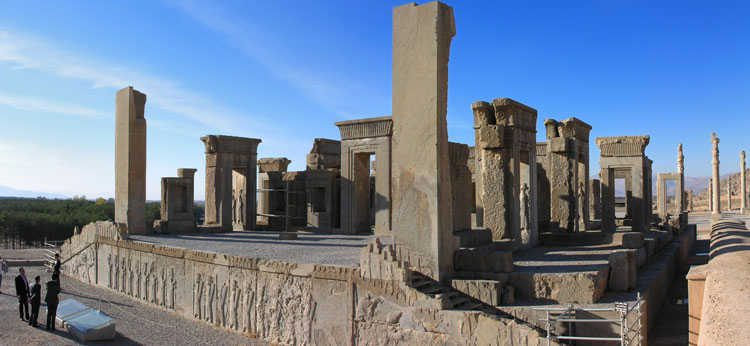
Meidan Emam, Esfahan
Imam Square, also known as Naqsh-e Jahan Square, is located in Isfahan city in Iran. It is one of the largest squares in the world. Naqsh-e Jahan Square was constructed by Shah Abbas I at the beginning of the 17th century. Meidan Emam is surrounded by historical monuments on all sides: to the east, the Sheikh Lotfallah Mosque; to the west, the pavilion of Ali Qapu; to the north, Qeysarie Gate and Qeysarie Bazaar; and to the south by Shah Mosque. It is an example of Iranian-Islamic architecture. UNESCO declared Imam Square a World Heritage Site in 1979.
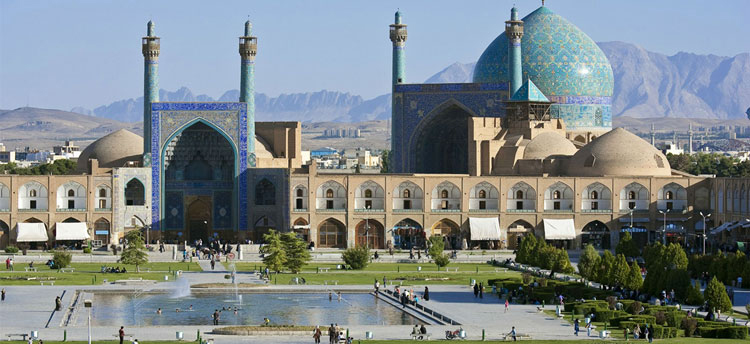
Chogha Zanbil
Chogha Zanbil or Tchoghā Zanbīl is an ancient Elamite complex in southeast of Susa located in Khuzestan province in southwest of Iran. The five floor Ziggurat, a square-shaped building with 105meters height and 52 meters in width, was constructed around 1250 BC by the Elamite king, Untash-Napirisha. Ziggurat is regarded as the symbol of Elamite architecture. Ziggurats were considered holy and respected places and Chogha Zanbil Ziggurat was used as a religious capital and it was probably a place constructed by Elamites for the gods. So, the best and high quality materials (mainly mud bricks and occasionally bricks) were used to build it. Choqa Zanbil Ziggurat is considered as the largest ziggurat outside of Mesopotamia and the best preserved one in the world. Chogha Zanbil Ziggurat is the first Iranian monument registered as a UNESCO World Heritage Site in 1979.
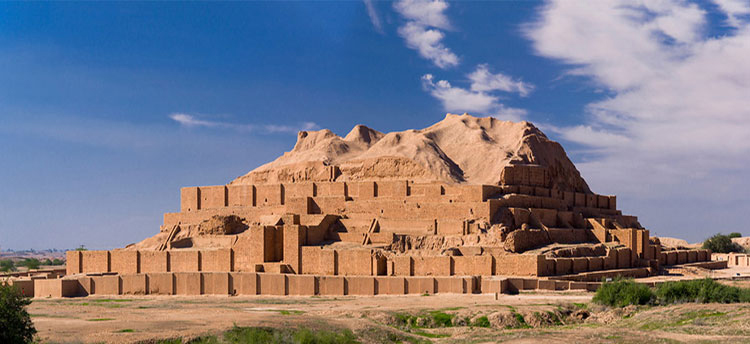
Takht-e Soleyman
The archaeological site of Takht-e Soleyman (literally means Throne of Solomon) or Azar Goshnasp Atashkade (fire temple) is situated in a mountain region in Takab County in West Azerbaijan Province, the northwest of Iran. It is one of the most attractive places remained from ancient Persia. There are some legends about it, for example some historians believe Zoroaster was born here. This ancient city was inhabited in different eras including Medians, Parthians, Sassanids, and Mongols. Today, there are some remnants of the different periods including Sassanid and Ilkhanid gates, Azar Goshnesb Fire Temple, which is considered one of the three of most important fire temples and a symbol of Zoroastrian’s power, Anahita Temple, Solomon’s Prison, Belqeys Mountain, and the western iwan known as Iwan-e Khosro. It was a UNESCO-listed archaeological site registered in 2003.
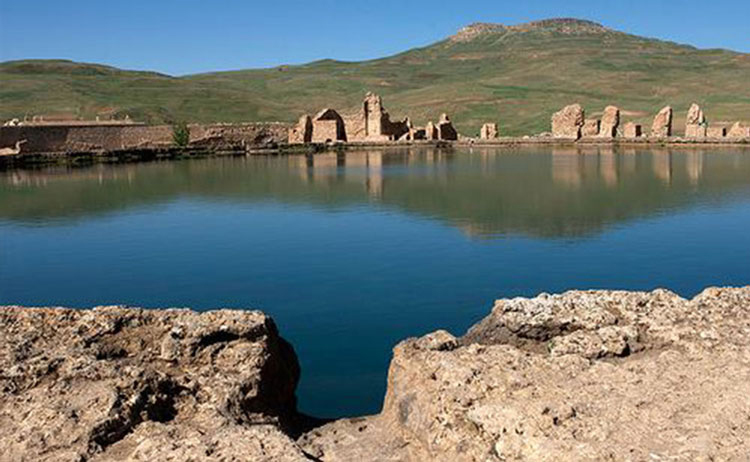
Pasargadae
Pasargadae is the oldest residences Achaemenid Empire, founded by Cyrus the Great in the 6th century BC in the southern part of Iran, in Fars province. It consists of several monuments and buildings such as the Tomb of Cyrus the Great, Tall-e Takht, a royal ensemble of gatehouse, audience hall, residential palace and gardens etc. all describing Achaemenid architecture and Persian civilization. Pasargadae also includes the oldest Persian Garden according to which design, other Persian gardens were designed and built and nine of these Persian Gardens were listed in UNESCO World Heritage Site. It was registered as a UNESCO World Heritage Site in 2004.
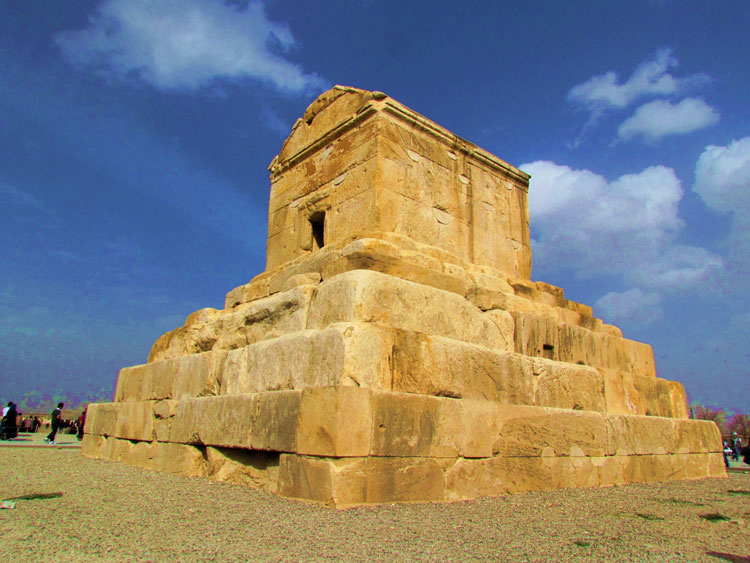
Bam and its Cultural Landscape (Arg e Bam)
Arg-e Bam is a historical monument which probably dates back to the Achaemenid period (6th to 4th centuries BC) and is located on the Silk Road in the southeast of Iran in a desert environment (Dasht-e Lut). This huge citadel is an outstanding example of a medieval Central Asian and the largest mud-brick building in the world. The complex is a large fortress with a citadel in the middle. However, it is known as Arg-e Bam since the citadel is considered the highest part of the fortress. Arg-e Bam is constructed in two different parts: the ruler’s part and the ruled-over part. The ruler’s part is located in the most internal wall consisting of a military fortress, barracks, a 4-season house and a stable for 200 horses. The ruled-over part includes the main entrance of the city, the main path connecting the main entrance to the citadel, approximately 400 houses and some public buildings. Arg-e Bam was completely destroyed during the severe earthquake that affected Bam area in 2003; however, it was renovated and registered as a UNESCCO World Heritage Site in 2004.
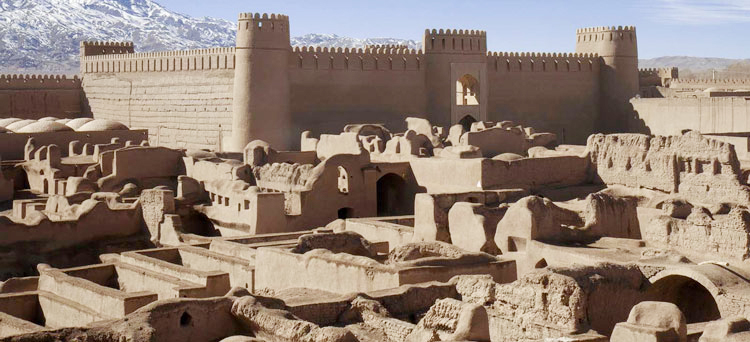
Dome of Soltaniyeh
Dome of Soltaniyeh is located in Soltaniyeh District in Zanjan Province, northwest of Iran. Soltaniyeh was the capital of Mongol Ilkhanid dynasty in the 14th century. So, the Dome of Soltaniyeh is the Mausoleum of Il-khan Öljeitü, also known as Muhammad Khodabandeh, which was founded under the command of Muhammad Khodabandeh in an octagonal shape with the height of 50 meters and in turquoise-blue color. The dome is surrounded by eight minarets. It is considered the oldest double-layered dome, the largest brick domes in the world, and one of the masterpieces of Persian and Islamic architecture. Some historians believe that Sultan Mohammad Khodabandeh constructed the dome to transfer the body of Islamic figures, i.e. the Prophet Muhammad, Imam Ali, and Imam Hussein; from their mausoleums to Soltaniyeh. However, after a dream, he quitted it. In 2005, UNESCO listed Soltaniye as one of the World Heritage Sites.
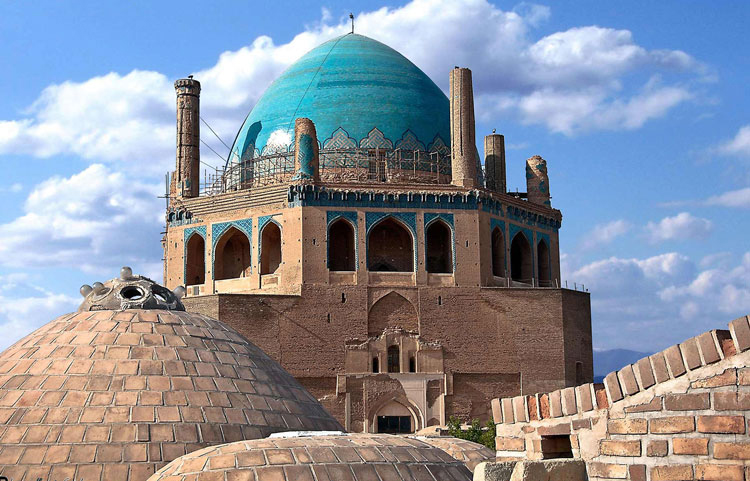
Behistun or Bisotun
Behistun or Bisotun is one of the most outstanding historical attractions and an archaeological site in Iran which dates back to pre-historic times. Behistun is located on the ancient trade route that connected Iranian plateau to Mesopotamia, in a mount with the same name, Mount Behistun, in Kermanshah province. Bisotun had been made by Darius the Great, at a height of 20.5 m and with the width of 7.80 m in 521 BC. It is famous for its inscriptions describing the battles by Darius I and the governors trying to take apart the Empire. The inscription is written in three languages: Elamite, Babylonian and Old Persian. Bisotun’s inscription is known as the only historical text from the Achaemenids. The other historical monuments in Bisotun Area referring to different historical periods include Hunters’ cave, Median remnants, Achaemenians’ remnants, Seleucid remnants, Parthian remnants, Sassanian remnants, lkhanid caravansary, and Safavid remnant. Bisotun was registered as a UNESCO world heritage site in 2006.
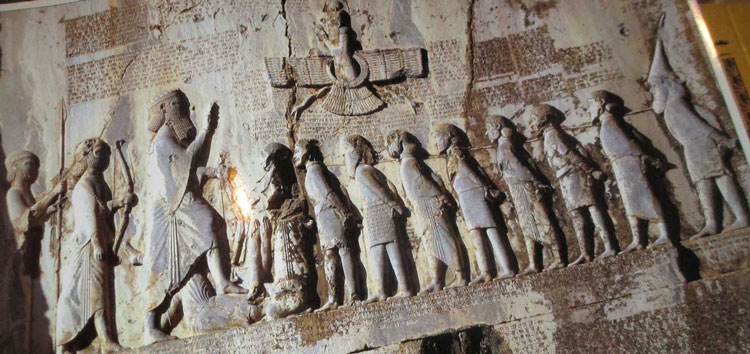
Armenian Monastic Ensembles of Iran
The Armenian Monastic Ensembles of Iran is located in the northwest of Iran, in West Azerbaijan and East Azerbaijan Provinces. The Armenian Monastic Ensembles of Iran consist of three Armenian churches: St. Thaddeus Monastery which is the oldest one, St. Stepanos Monastery and the Chapel of Dzordzor. The monasteries date back to the period between the 7th and 14th centuries A.D. They are considered as the tremendous examples of Armenian architecture in Iran and indicate the important interchanges with other regional cultures, especially the Byzantine, Orthodox, Persian, Assyrians and Muslims. St. Stepanos Monastery is regarded as the most famous one. The church is constructed in a valley which ends to the Aras or Araxes river and is still used to pray by Armenians. Today, these monasteries are the only important remains of Armenian culture in the northwest of Iran. The Armenian Monastic Ensembles of Iran were registered as a UNESCO World Heritage Site in 2008.

Shushtar Historical Hydraulic System
Shushtar Historical Hydraulic System is located in Khuzestan Province in southwest of Iran. It is known as a masterpiece of creative genius. This complex was constructed during Achaemenid Empire, during the reign of Darius the Great. However, the main part of it was built during the Sassanid era to make best use of water. The Shushtar Historical Hydraulic System is considered as one of the largest engineering and technical masterpieces in the world considering its construction time. This masterpiece consists of many structures such as Shadorvan Grand Weir or Band-e Kaisar, Salasel Castle, Band-e Mizan Weir, Band-e Mahi Bazan Weir, Lashkar Bridge-Dam, Band-e Khak Weir, Band-e Sharabdar Weir, Band-e Borj-e Ayar Weir, Shah Ali Bridge-Dam, Kolah Farangi (pavilion), the set of Water Mills forming a cliff from which some water cascades are formed, and the handmade ancient Stairway. Shushtar Historical Hydraulic System was registered in UNESCO's list of World Heritage Sites in 2009.
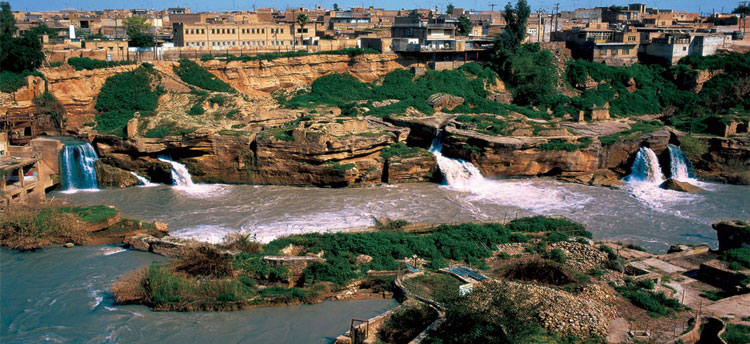
Sheikh Safi al-din Khānegāh and Shrine Ensemble in Ardabil
Sheikh Safi al-din Khānegāh and Shrine Ensemble, located in Ardabil in the northwest of Iran, is a monument including the tomb of Sheikh Safi-ad-din Ardabili who was an ancestor of Shah Ismail, the founder of Safavid dynasty. His son, Sheikh Sadr al-Dīn Mūsā, constructed the mausoleum after Sheikh Safi’s death to honor him. It was constructed from the beginning of the 16th century to the end of the 18th century. Along with Sheikh Safi, some of the important figures such as Shah Ismael and his mother are buried at the complex. The complex is regarded as a unique masterpiece of Islamic architecture in the medieval period and registered in the UNESCO world heritage list in 2010.
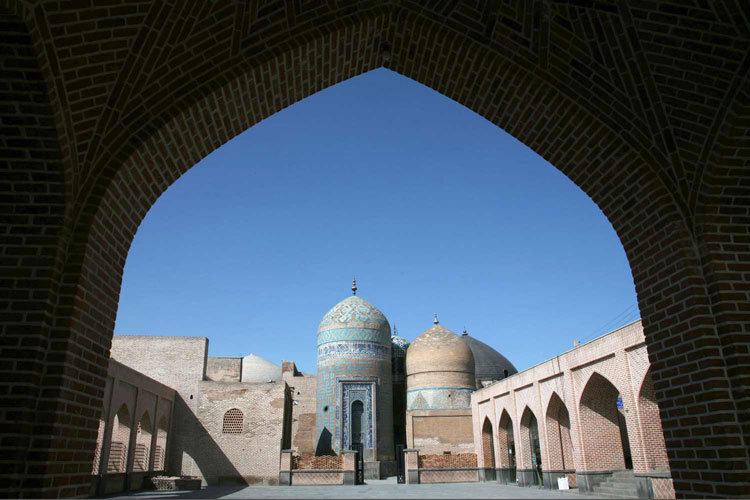
Tabriz Historic Bazaar Complex
Tabriz Historic Bazaar Complex which is famous as Bazaar of Tabriz is located in the center of Tabriz in East Azarbaijan province in the northwest of Iran. due to its location on the Silk Road, Tabriz Bazaar has been considered one of the most important commercial centers. Tabriz Historic Bazaar Complex includes a set of interconnected covered structures which are made of brick and are used for different purposes. It is thought as the prototypical model of the traditional commercial and cultural system of Iran. It was famous and prosperous even before Tabriz was chosen as the capital city of the Safavid dynasty. Tabriz Historic Bazaar Complex is regarded as one of the oldest Bazaars in the Middle East as well as the longest covered one in the world. It was registered in the UNESCO world heritage list in 2010.
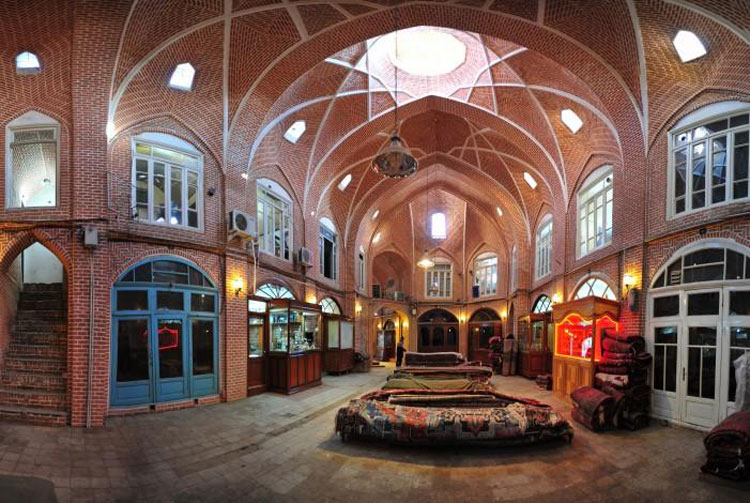
The Persian Gardens
Persian Gardens consist of nine Iranian gardens which are known as the oldest and most important gardens in the world, modeled by the Pasargadae Garden constructed by Cyrus the Great through 550-330 BC. So, the Pasargadae Garden is considered as the prototype model of Iranian gardens, according to which other Persian Gardens were designed and built. In all of these Persian Gardens, what can be observed is a four-garden (Chahar Bagh) pattern with the main elements of water passing through an underground tunnel called Qanat, tall walls and mansions. Persian Gardens are unique and are located in different climate conditions and geographical regions of Iran. These nine gardens were registered in the list of UNESCO world heritage site in 2011 under the name of Persian Gardens as a model of Iranian gardens.
To read more about all nine Persian Gardens in details, click on the link.
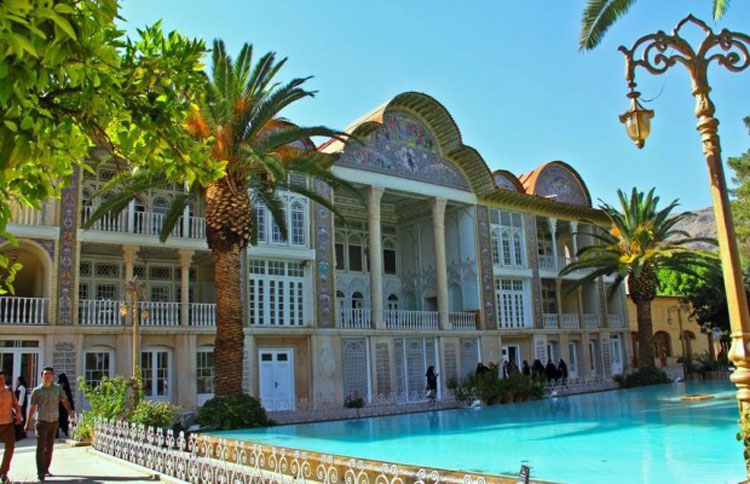
Gonbad-e Qābus
Gonbad-e Qābus or Gonbad-e Kavus is located in the city with the same name, which was historically named Gorgan; however, due to a mistake in 1930s another neighboring town was named Gorgan by the government. Therefore, although now there is a city named Gorgan in Iran, it is the not the historical city with the same name and that historical city is currently named as Gonbad-e Kavus. Both cities, Gonbad-e Kavus and Gorgan are located in Golestan Province in northeast of Iran. Gonbad-e Qabus is located in Gonbad-e Kavus, an ancient city which was destroyed during the Mongols’ invasion and now some ruins of which is remained. The monument of Gonbad-e Qabus, meaning tower of Kavus, is considered the tomb of Qābus Ibn Voshmgir, one of the literate rulers of Ziyarid dynasty. It is the oldest tomb tower constructed in 1006 AD in Razi style in terms of architecture. The 53-meter-high tomb is made of bricks. The Tower of Kavus includes two parts: the foundation and its building and the conical dome. Gonbad-e Qabus Tower was registered as a UNESCO world heritage site in 2012.
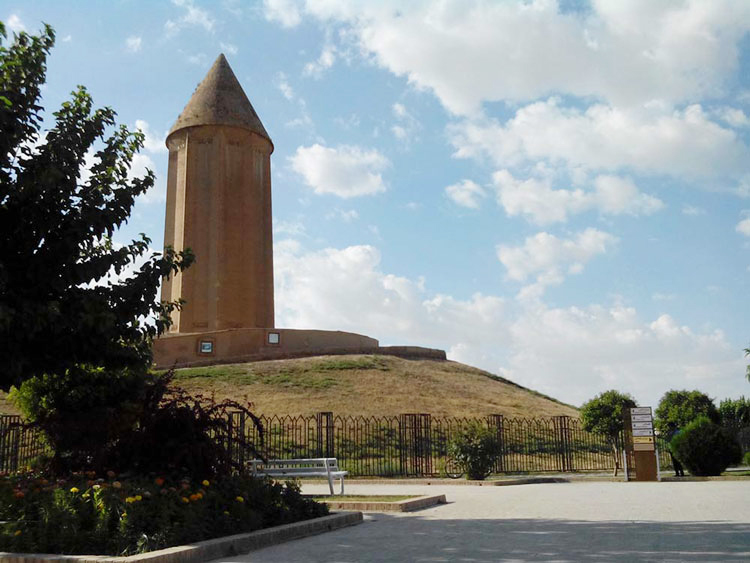
Jameh Mosque of Isfahan (2012)
Jameh Mosque or Masjed-e Jāmé of Isfahan, located in Isfahan province, dates back to 840 CE and recognized as the oldest and the biggest mosque in Iran. It neighbors Grand Bazaar of Isfahan and reflects the Islamic architecture of Seljuqs, Mongol and Safavid eras. Jameh Mosque’s architecture is attributed to Razi style. It should be mentioned that the mosque was under the continual construction and renovation until late 20th century. Jameh Mosque of Isfahan was registered as a UNESCO world heritage site in 2012.
To read more about other tourist attractions in Isfahan, click here.

Golestan Palace
Golestan Palace or Kakhe Golestan is situated in Tehran, the capital of Iran. This royal palace dates back to Safavid era; however, some changes have been made in the following centuries and eras. Golestan Palace was built around a beautiful garden and a pool. It includes some buildings such as Khalvat-i Karimkhani Hall, Salam Hall (Talar-e Salam), Shamsol Emareh, Marble Throne, etc. Golestan Palace was registered as a UNESCO World Heritage Site in 2013.
To read more about the Golestan Palace and the other top places to see in Tehran, click on the link.
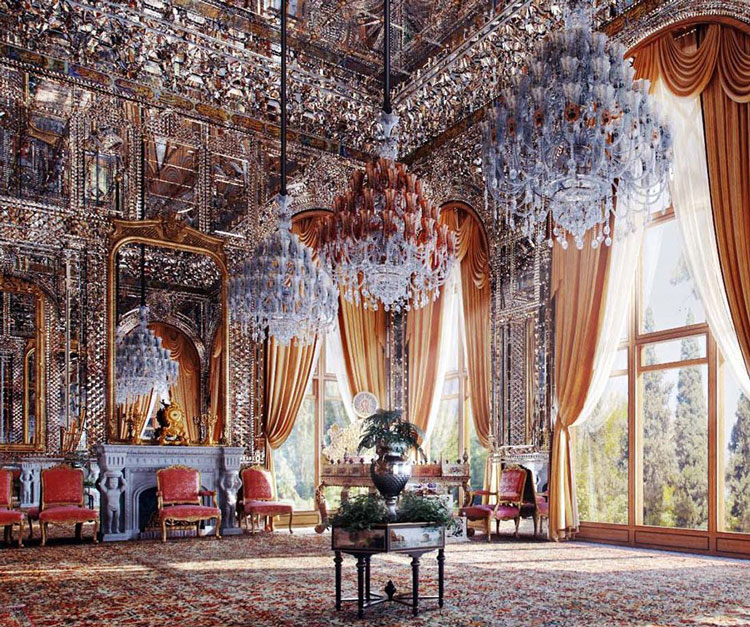
Shahr-e Sukhteh
Shahr-e Sukhteh literally means ‘Burnt City’ in Persian and is a Bronze Age city connected to Jiroft Culture. It is located on the bank of the Helmand River near the Zahedan-Zabol road in Sistan and Baluchistan Province in the southeast of Iran. Archeologists believe it is the first city in the world in terms of urban texture, population, urban planning, and so on. Also the remains of the mudbrick city proved it as the first complex society dating back to around 3200 BC. It probably is ruined due to the diversions in water courses and climate changes in the early second millennium. There are some amazing discoveries obtained from the ancient Shahr-e Sukhteh such as the first artificial eye in the world, some evidences of brain surgery, a 5000-year-old ruler, the world's first animation, jewelries etc. Shahr-i Sokhta was registered in the UNESCO world heritage list in 2014.
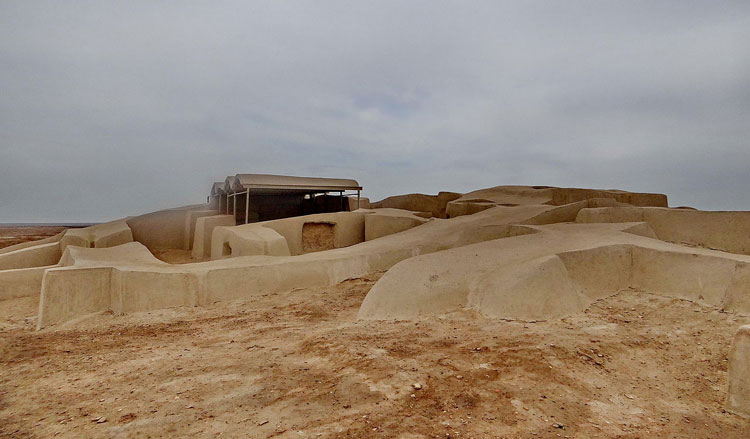
Cultural Landscape of Maymand
Meymand is an ancient rock village located in the city of Shahr-e Babak in Kerman province. It is regarded as a primary human residence dating back to 12,000 years ago and has been settled continuously for more than 2,000 years. Undoubtedly, it is one of the earliest human settlements. Some of the archaeologists believed that troglodytes have dug and constructed their houses in the mountains due to their religious beliefs and worshipping pre-Zoroastrian Mithraism, so they had tried to find gods on top of the mountains. The discoveries in Maymand reveal some inscriptions, the 10000-year-old carvings, and 6000-year-old potteries, etc. There is a narration saying that the word “Meymand” consists of two words Mey, an especial kind of wine, and Mand, means drunken. Therefore, the villagers had built their houses when they had been drunk. The Cultural Landscape of Maymand was registered in UNESCO world heritage list in 2015.
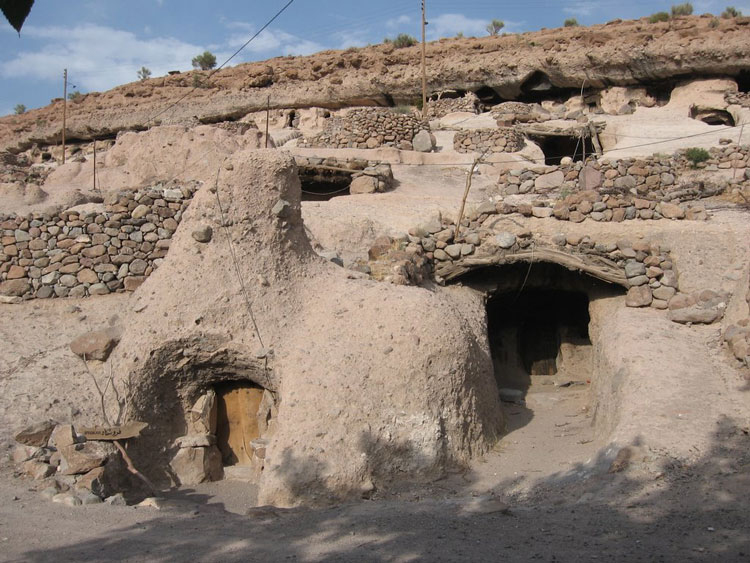
Susa
Susa is one of the oldest cities in the world dating back to 4200 BC. However, the discoveries reveal the remnants from an even older era dating back to 7000 BC. Susa was the capital of Elamite as well as that of the Achaemenian king, Darius I. It is situated at the foot of the Zagros Mountains and vicinity of the Karkheh River in the current Khuzestan province in southwest of Iran. Darius I founded Apadana Palace , the winter palace of the Achaemenid Kings and the main palace of Darius I, over the ruins of the Elamite Fortress. Susa is also famous for homing the Tomb of Daniel, the Biblical prophet. Nowadays, Susa is regarded as one of the most important ancient sites in the world. It was registered as a UNESCO world heritage site in 2015.
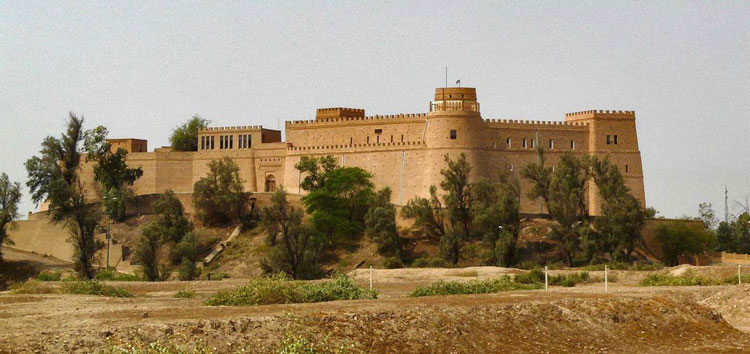
The Persian Qanat (2016)
The Persian Qanat is an ancient underground water-management system used for agriculture and other usages in the central and eastern parts of Iran, the desert climate. Qanats include some connected wells, the main one is called mother well, and tunnels, called Koshkan in Persian, connecting these wells and carrying the water. It is said that Iran contains much more than 30000 Qanats; however, just 11 of them were registered as Persian Qanats in the UNESCO world heritage list in 2016. These 11 qanats are Ghasabeh Qanat of Gonabad in Razavi Khorasan, Baladeh Qanat of Ferdows in South Khorasan, Zarch Qanat in Yazd, Hassan Abad Moshir Qanat in Yazd, Gohar-riz Qanat in Kerman, Akbarabad Qanat in Kerman, Ghassemabad Qanat in Kerman, Moun Qanat in Isfahan, Vazvan Qanat in Isfahan, Mozdabad Qanat in Isfahan, Ebrahimabad Qanat in Markazi.
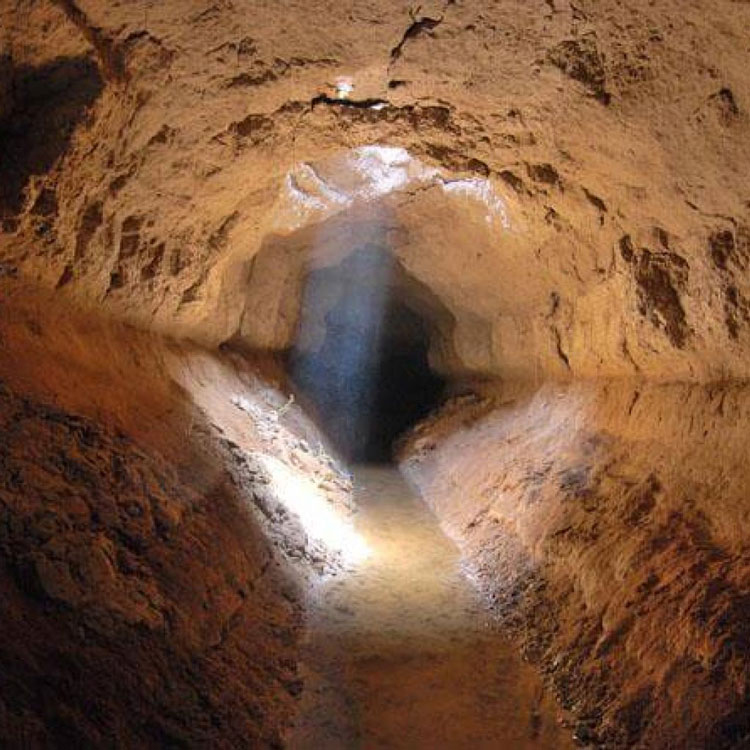
Historic City of Yazd
Yazd province, located in the middle of Iran, include one of the largest historical areas in the country. City of Yazd is nicknamed as the City of Wind towers and City of Bicycles. Yazd is famously important for its unique adobe texture, the qanat system, the Zoroastrian monuments, historical mosques, traditional houses, bazaars, Hammams, the specific deserts, as well as homing Persian Gardens like Dolat Abad Garden and Pahlavanpour Garden, etc. Like many places in Yazd province, the 2500-year-old historic part of Yazd is highlighted by UNESCO as the world heritage site in 2017 in terms of history and intact traditional culture that is still active and living today.
To read about the Old City of Yazd in details, click on the link.
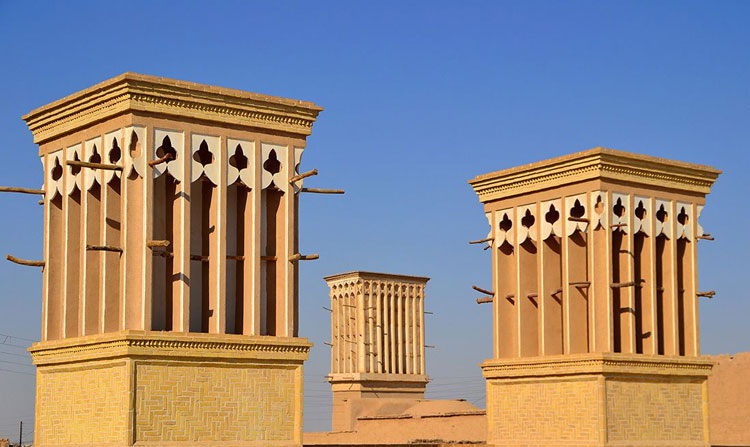
Sassanid Archaeological Landscape of Fars Region
Sassanid Archaeological Landscape of Fars Region is a complex of historical monuments that date back to the Sassanian Empire Period from 224 to 658 BC. These landscapes include the eight prominent places: The Investiture Relief of Ardashir, Victory Relief of Ardashir, Shapur Cave, Gur Ancient City, Palace of Ardashir Papakan, Dezh Dokhtar, Sarvestan Palace, and the ancient city of Bishapur which are located in the cities Bishapur, Firoozabad, and Sarvestan. Sassanid Archaeological Landscape of Fars Region was registered in the UNESCO world heritage list in 2018.
The Only UNESCO Natural World Heritage Site in Iran
Lut Desert
The Lut Desert or Dasht-e-Lut, covers Kerman, South Khorasan and Sistan and Baluchestan provinces which include the southeast region of Iran. In Persian, Lut means a land without any water and vegetation.
Lut Desert is considered an example of ongoing geological processes and that is what has made it famous and of a high importance. Moreover, Dasht-e Lut is considered as an abiotic zone due to being the hottest place on Earth according to several NASA researches which took for seven years and Lut Desert was shown as the hottest spot in the world for five years. For example, the temperature of Lut Desert reached to 159.3 degrees Fahrenheit in 2005. So if you are enthusiastic in desert but afraid of animals living there like that scorpions, snakes, lizards, and etc., you can feel free about it as they cannot live in such heat.
So far, Dasht-e Lut is the only Iranian natural wonder registered in the UNESCO natural world heritage list in 2016.
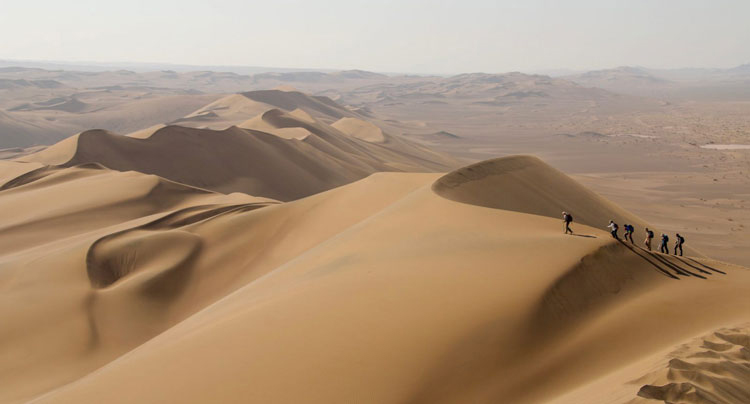
Raadina offers intersting tours which include many of the mentioned highlited places. Click to learn about these Iran tours.
Sites on the Tentative List
In addition to the above places, there are a large list of tentative sites in Iran with the necessary potential to be registered in UNESCO world heritage list. Here, we just refer to them.
| Site |
City/ Region |
| The Historical City of Masouleh |
Guilan Province |
| The Complex of Izadkhast |
Fars Province |
| Cultural Landscape of Alamout |
Qazvin Province |
| Zozan |
Razavi Khorasan Province |
| Khorramabad Valley |
Lorestan Province |
| Jiroft |
Kerman Province |
| Ghaznavi- Seljukian Axis in Khorasan |
Khorasan Province |
| The Cultural Landscape of Uramanat |
Kurdistan Province |
| Hyrcanian Forest (Caspian Forest) |
Northern Region |
| Qeshm Island |
Hormozgan Province |
| Arasbaran Protected Area |
North-western Region |
| Sabalan |
Ardabil Province |
| Khabr National Park and Ruchun Wildlife Refuge |
Kerman Province |
| Alisadr Cave |
Hamedan Province |
| Silk Route (Also as Silk Road) |
Across the country |
| The Natural-Historical Landscape of Izeh |
Khuzestan Province |
| The Zandiyeh Ensemble of Fars Province |
Fars Province |
| Kerman Historical-Cultural Structure |
Kerman Province |
| Hegmataneh |
Hamedan Province |
| The Collection of Historical Bridges |
Across the country |
| Touran Biosphere Reserve |
Semnan Province |
| Hamoun Lake |
Sistan Region |
| Harra Protected Area |
Qeshm Island |
| Damavand |
Mazandaran Province |
| Asbads (windmill) of Iran |
Razavi Khorasan Province |
| Natural-Historical Complex / Cave of Karaftoo |
Kurdistan Province |
| Imam Reza Holy Complex |
Razavi Khorasan Province |
| Trans-Iranian Railway |
Across the country |
| Industrial Heritage of textile in the central Plateau of Iran |
Central Part |
| Persian Caravanserai |
Across the country |
| Salt Domes of Iran |
Fars Province |
| The Great Wall of Gorgan |
Golestan Province |
| The Persian Houses in Central Plateau of Iran |
Central Part |
| University of Tehran |
Tehran Province |
